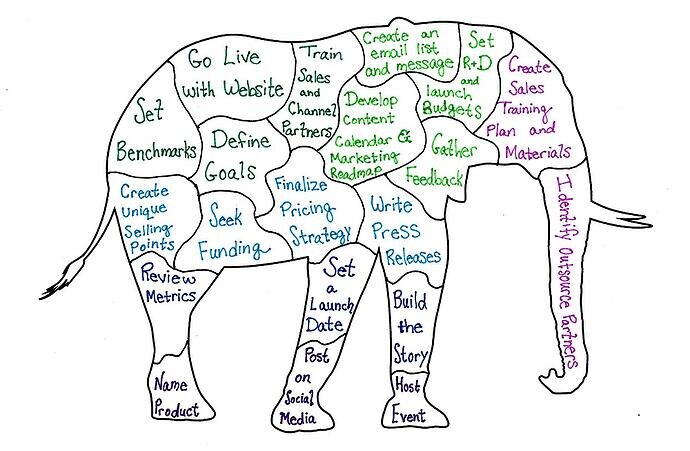You know what the scary thing is about impossible? It’s how unsurmountable it looks from every angle, but it can sneak up on you in a heartbeat despite its size. Like a crazed, but wily elephant. You’ll get trampled before you even know it's there.
That’s how your employees are feeling. The ground is shaking under them and they’re in fight, flight, or freeze mode. When they’re cornered by The Impossible Choice, where are they going to go? They’ll make that choice and your company will end up getting flattened.
What is The Impossible Choice?
It's what happens when business is either so bad or so good that it overwhelms your systems, forcing people to choose between three negative paths for survival: Cheat, Fail, or Die Trying. This can happen for any number of reasons, but the 18+ months of perpetually pivoting and multiplying crisis is the main culprit right now.
Management must realize when their team members are being forced into these decisions and have systems in place to stop it. The very survival of your business will depend on it. Maybe the current crisis isn’t the elephant in your room, but every company will encounter the impossible choice in one form or another at some point. You can’t let that possessed pachyderm flattened your workforce.
Don’t take it personally. I doubt you meant to corner your employees with a crazed elephant. That doesn’t change the fact that it was let loose and now has to be dealt with. There are two ways to handle The Impossible Choice: prevention and cure. We’ll go over some steps you can take for both.
How do you prevent The Impossible Choice?
An ounce of prevention is worth a pound of cure, right? It takes an unbelievably small amount of cure to prevent the impossible choice from becoming a mammoth problem.
- Listen first. Managers need to be trained to ask the right questions and actually hear the answers. Group meetings and feedback are vital, but don’t neglect the individual. It can be easier for some people to speak up when there isn’t a crowd.
If your managers are having a hard time starting those conversations, here’s a simple online quiz that can prompt your people to open up a bit.
- Leverage performance management. You should have a process in place that makes it clear what employees should be working on, builds trust between managers and workers, facilitates ongoing communication, and tracks all of that. Of course, we’re going to recommend Catalytic Coaching, but you have to find what works best for your company. Want to explore what Catalytic Coaching can do for you? Let us know.
- Assess the risk. Do you have a strong leadership team in place that can detect problems before they get out of hand and pivot in a way that won’t overburden employees? If they’re already overwhelmed, then realign before it's too late. That may include examining the organization’s structure and resource allocation.
Getting an outside perspective will give you the advantage. Bring in a consultant that can objectively find the weak points and help strengthen your company.
How do you repair the damage once The Impossible Choice has been made?
- Listen first. Yes, it applies to both prevention and the cure. Once the impossible choice has been made, communication becomes more important than ever. WHY was that choice made? WHAT did it solve in the short term and what did it hurt in the long run? HOW will we change to make things better in the future?
Managers aren’t sure how to start those uncomfortable conversations? We have tools you can use. The above linked quiz is one example. There’s also the Life Disruption Index that Gary designed last year. You can request access to that via the button.
- Keep coaching. Performance management can provide stability and build trust in times of uncertainty. If you don’t have a process that does that, get one.
This should also support and facilitate handling a complicated situation with an employee that has become problematic. If the choice they made was that egregious, it may be time for a Job Threatening message. Don’t go at that alone though. Tag in HR and a coach of coaches, if you have one.
- Take it a bite at a time. You can’t eat an elephant in one sitting and you can’t solve an impossible problem overnight. Break the problem down into actionable steps. That will make it easier to handle and more likely to be resolved.
Taming the crazed elephant won’t be easy.
Saying and doing are very different things. No leader can solve The Impossible Choice on their own. It’ll take everyone’s efforts and everyone may already be up to their eyeballs. Here are some resources to help you prevent The Impossible Choice or repair the damage once it’s been done.





